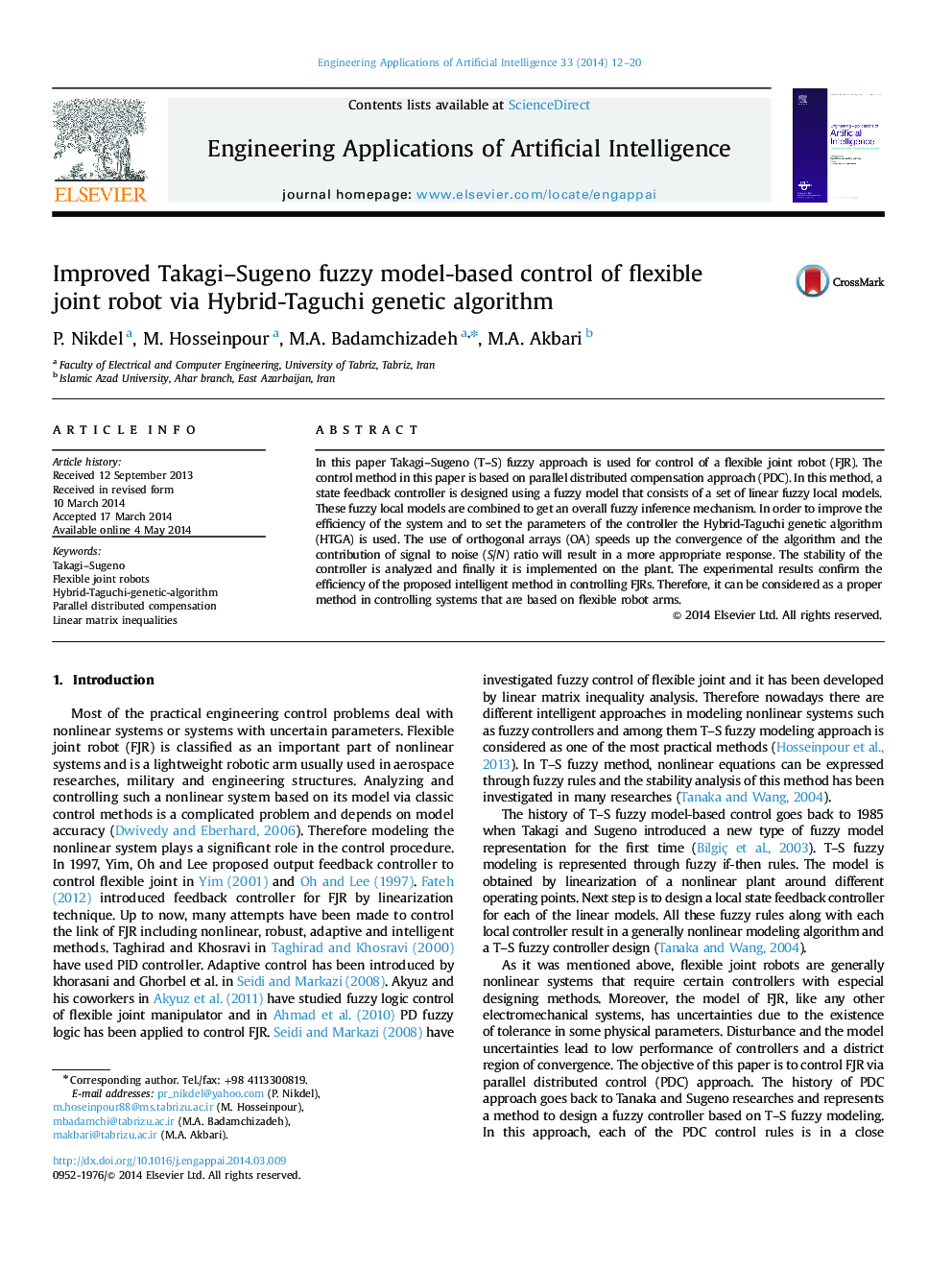| Article ID | Journal | Published Year | Pages | File Type |
|---|---|---|---|---|
| 380554 | Engineering Applications of Artificial Intelligence | 2014 | 9 Pages |
•Takagi–Sugeno fuzzy modeling for Flexible joint robot.•Using Hybrid-Taguchi genetic algorithm for feedback controller designing.•Proving stability of system and implementation on FJR.
In this paper Takagi–Sugeno (T–S) fuzzy approach is used for control of a flexible joint robot (FJR). The control method in this paper is based on parallel distributed compensation approach (PDC). In this method, a state feedback controller is designed using a fuzzy model that consists of a set of linear fuzzy local models. These fuzzy local models are combined to get an overall fuzzy inference mechanism. In order to improve the efficiency of the system and to set the parameters of the controller the Hybrid-Taguchi genetic algorithm (HTGA) is used. The use of orthogonal arrays (OA) speeds up the convergence of the algorithm and the contribution of signal to noise (S/N) ratio will result in a more appropriate response. The stability of the controller is analyzed and finally it is implemented on the plant. The experimental results confirm the efficiency of the proposed intelligent method in controlling FJRs. Therefore, it can be considered as a proper method in controlling systems that are based on flexible robot arms.
